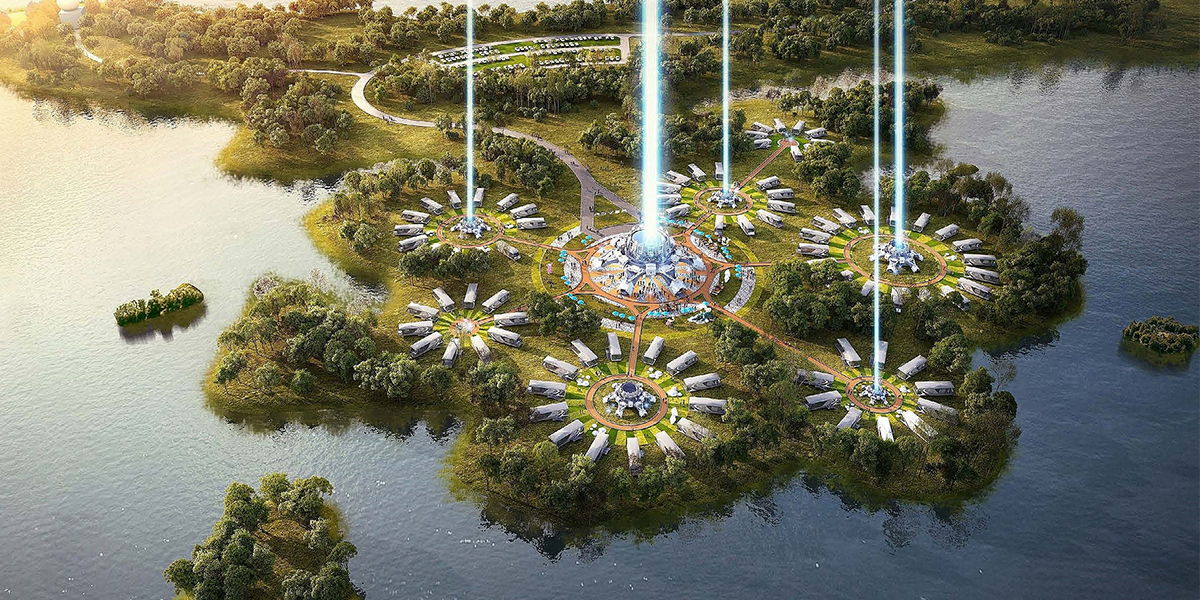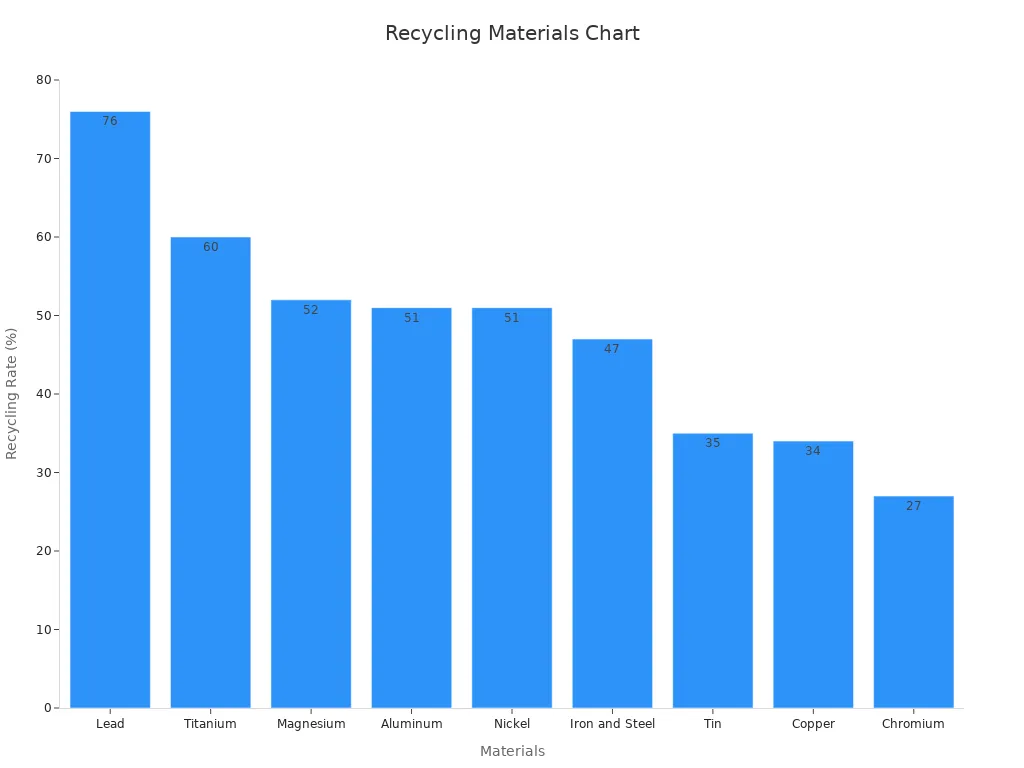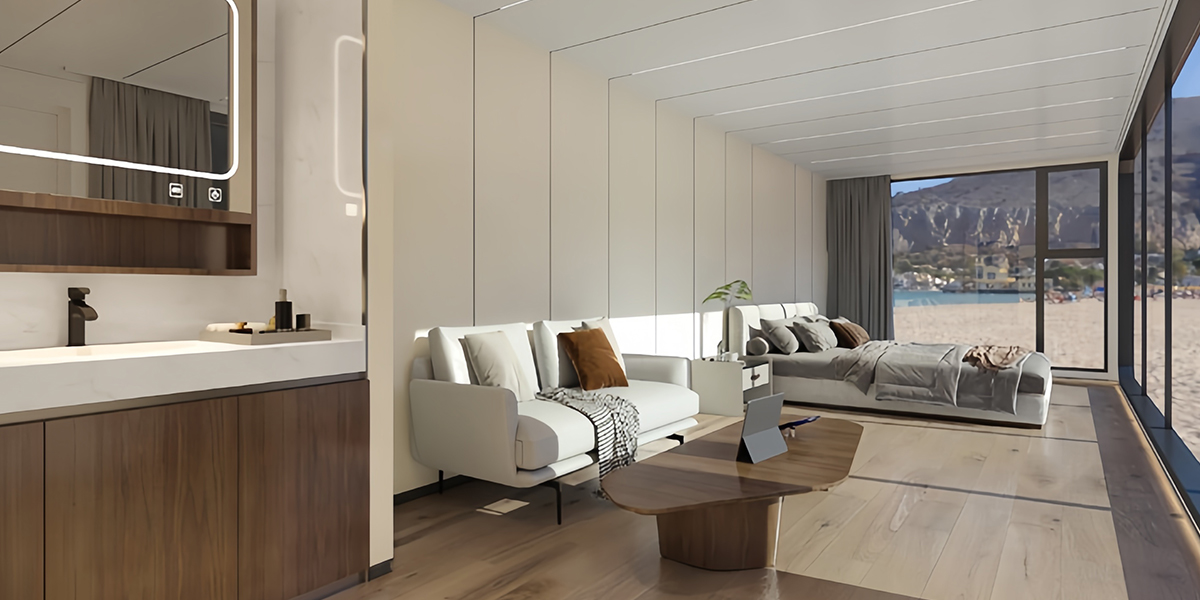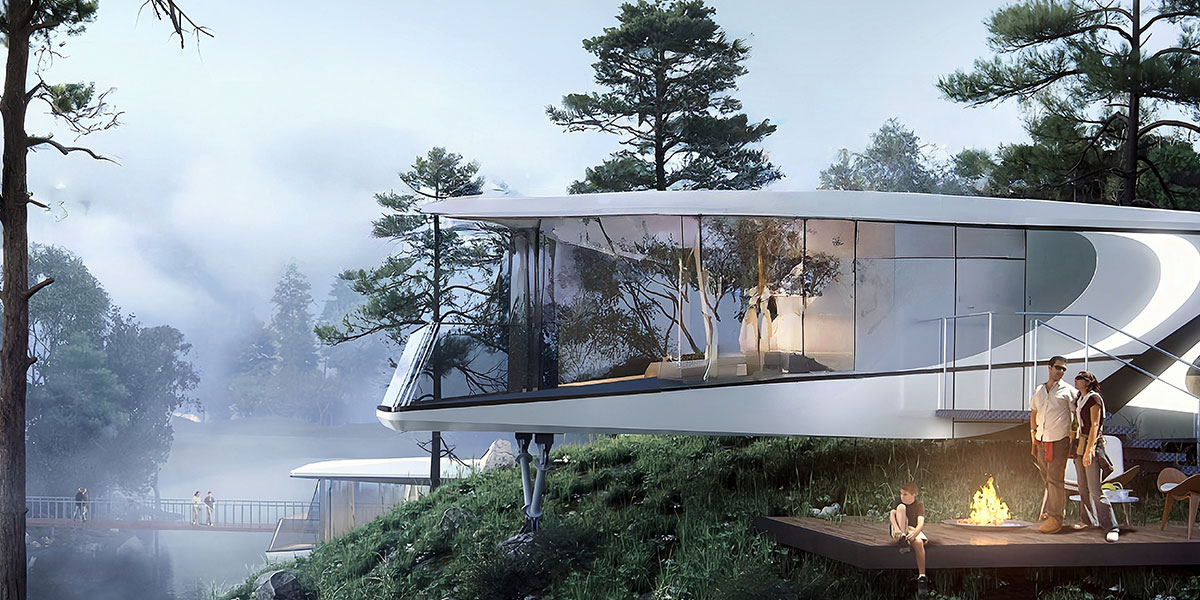
17 Jul Tips for Designing Sustainable Capsule Houses
Table of Contents
Sustainability is very important in designing capsule house designs. Using eco-friendly ideas lowers pollution and makes homes healthier. Research shows people value sustainability the most, scoring it 4.1 to 4.3. This highlights how crucial it is to build eco-friendly homes, including innovative capsule house designs.
Green homes, including capsule house designs, have clear benefits for today’s lifestyle. Certified green homes sell for 9% more than others. They also use up to 50% less energy and 40% less water. By choosing sustainable options, such as capsule house designs, you help the planet and save money over time.
Key Takeaways
- Green capsule houses use earth-friendly materials to cut pollution and make healthier homes.
- Using renewable and reused materials saves resources and cuts down trash, helping the environment.
- Energy-smart designs, like solar panels and good insulation, lower energy bills and reduce pollution.
- Smart use of space with multi-use furniture and tall storage makes small homes comfy.
- Water-saving tools, like rain collectors and low-water faucets, save water and lower bills.
Sustainable Materials for Capsule House Design
Renewable and Recycled Materials
Using renewable and recycled materials is key to eco-friendly building. These materials cut waste and lower harm to the environment. Bamboo, for example, grows fast and needs little care to grow. Recycled items like old wood or steel are strong and long-lasting. Recycled steel, for instance, is just as sturdy but uses less energy to make.
Studies show 41% of people prefer sustainable building materials. About 29% would pay more for them, while 49% would pay the same. This shows how important it is to use recycled materials in green home designs.
Material | Recycling Rate (%) |
|---|---|
Lead | 76 |
Titanium | 60 |
Magnesium | 52 |
Aluminum | 51 |
Nickel | 51 |
Iron and Steel | 47 |
Tin | 35 |
Copper | 34 |
Chromium | 27 |

Adding recycled materials to your home design helps save resources. It also reduces waste and supports eco-friendly goals.
Non-Toxic and VOC-Free Options
Non-toxic and VOC-free materials are important for healthy homes. VOCs, or volatile organic compounds, pollute indoor air and harm health. Using non-toxic paints, glues, and finishes makes the air cleaner and safer.
Research shows fewer toxic materials improve air quality and health. For example, VOC-free paints and scent-free products lower harmful chemical exposure. This helps both personal health and the environment by cutting pollution.
Choose materials without harmful chemicals for your green home. This makes your house safer and more comfortable for your family.
Locally Sourced Materials
Locally sourced materials are great for eco-friendly building. They cut transport pollution, save resources, and help local businesses. For example, using nearby stone or wood lowers the carbon footprint from shipping.
Economic and Environmental Benefits | Description |
|---|---|
Reduced transportation emissions | Cuts greenhouse gases from shipping |
Promotion of local economies | Helps local businesses and creates jobs |
Preservation of natural resources | Uses fewer materials that harm the environment |
Local materials are often better quality since you can check their source. They also improve air quality, making your home healthier and greener.
Using local materials helps the planet and supports your community. This fits perfectly with sustainable home design ideas.
Energy Efficiency in Eco-Friendly Homes
Saving energy is key to building an eco-friendly home. Using less energy lowers your carbon footprint and saves money. Energy-efficient designs keep your home comfy and good for the planet.
Passive Heating and Cooling Strategies
Passive heating and cooling use nature to control indoor temperatures. These methods cut down on using heaters and air conditioners. For example, placing your home to get sunlight in winter and shade in summer helps save energy. Adding insulation and putting windows in smart spots also keeps your home cozy.
Studies show retrocommissioning (RCx) can save 15% of energy costs. It pays for itself in just 8-9 months. Energy audits and upgrades can lower bills by 5-30%. Big changes can even cut energy use by half. These ideas make homes greener and more efficient.
Study/Strategy | Energy Savings | Extra Details |
|---|---|---|
Retrocommissioning (RCx) | 15% | Costs $0.27 per square foot, pays back in 8-9 months. |
Building Benchmarking and Transparency (B&T) | 3-8% | Savings seen over two to four years. |
Energy Audits and Retrofits | 5-30% | Big upgrades can save 20-50% energy. |
Using passive strategies makes your home greener and saves energy.
Solar Panels and Photovoltaic Glass
Solar panels are a big part of green home design. They turn sunlight into electricity, which is renewable energy. Putting solar panels on your roof cuts down on using fossil fuels. Photovoltaic glass is a new option. It works like solar panels but is clear and used in windows.
Switching from Low-E IGU to BIPV IGU glass can save 16.8% electricity. It also cuts HVAC energy use by 10%. These tools make homes more energy-efficient and eco-friendly.
Evidence Description | Percentage Saved |
|---|---|
Electricity saved by replacing Low-E IGU with BIPV IGU | 16.8% |
Average HVAC electricity saving of BIPV IGU | 10% |
Adding solar panels or photovoltaic glass helps the planet. These choices lower your carbon footprint and save energy.
Energy-Efficient Windows and Insulation
Energy-efficient windows and insulation keep your home comfy. Double-glazed and triple-glazed windows work better than single-pane ones. They stop drafts and keep heat inside, saving energy. Insulating your roof, walls, and floors also helps control temperature.
Research shows energy-efficient windows and insulation have big benefits. Smart windows with special glazing can lower room temperatures by 2.5 °C. Electrochromic glazing saves up to 23% energy with daylight control and 17% with glare control. Roof insulation alone can cut cooling needs by 44%.
Double-glazed windows insulate better than single-pane ones.
Triple-glazed windows offer even more protection.
Insulated windows and roofs reduce drafts and save energy.
Upgrading windows and insulation makes your home greener and saves money over time.
Space Optimization in Sustainable Homes
 Using space wisely is key for eco-friendly capsule houses. Making every area useful creates a home that feels roomy and practical.
Using space wisely is key for eco-friendly capsule houses. Making every area useful creates a home that feels roomy and practical.
Multi-Functional Furniture
Furniture with multiple uses is great for small green homes. These items save space and keep things organized. For example, a sofa bed can turn into a guest bed. A dining table with storage can hold your items neatly. In crowded cities, such furniture keeps homes comfy and stylish. Micro-apartments have made these designs even more popular. They show how useful and smart this furniture is for modern living.
Vertical Space Utilization
Using vertical space helps make small homes more efficient. Think about using walls and ceilings for storage. Add shelves, hanging racks, or loft beds to save floor space. Famous designs like the Nagakin Capsule Tower use vertical layouts well. The Sumiyoshi House also shows how to save space while staying eco-friendly. These ideas work for capsule houses and tiny apartments. Using vertical space makes homes more functional and green.
Case Study | Description |
|---|---|
Nagakin Capsule Tower | Capsules stacked vertically for compact, individual living. |
Sumiyoshi House | Simple design with smart space use, following eco-friendly ideas. |
Natural Light Integration
Letting natural light in saves energy and boosts happiness. Big windows, skylights, and open spaces bring sunlight indoors. This lowers the need for electric lights. Studies say natural light improves mood and reduces stress. One study with 750 people found more daylight made them happier. Adding natural light makes your home brighter and more welcoming.
Tip: Use pale walls and shiny surfaces to reflect sunlight better.
Water Conservation in Capsule House Design
Saving water is key to building eco-friendly capsule houses. Using smart systems and fixtures helps save money and protect resources.
Low-Flow Fixtures and Tankless Water Heaters
Low-flow fixtures use less water but still work well. Examples include faucets, showerheads, and toilets. A low-flow showerhead can cut water use by half. These fixtures save water and lower your bills.
Tankless water heaters heat water only when needed. They don’t store hot water like regular heaters. This saves energy and gives hot water anytime. Together, these tools make homes greener and more efficient.
Rainwater Harvesting Systems
Rainwater harvesting collects rain for reuse. You can use barrels or tanks to store water from your roof. This water works for gardening, cleaning, or flushing toilets. It reduces the need for city water and saves resources.
Gray Water Recycling
Gray water recycling reuses water from sinks and showers. This treated water can be used for irrigation or toilets. Recycling gray water cuts waste and saves water. Adding this system makes your home more eco-friendly.
Tip: Use both rainwater harvesting and gray water recycling to save more water.
Cost-Effective Strategies for Sustainable Homes
DIY Customization Ideas
Making your home unique with DIY projects saves money. Prefabricated homes are easy to build and use good materials. They are energy-efficient and last longer because they avoid weather damage during construction. Container homes are another cool choice. You can design them creatively and stay eco-friendly. These homes can even work for off-grid living, but setup costs and rules need planning.
For smaller projects, reuse old furniture or make shelves from reclaimed wood. These ideas cut waste and make your home special. Doing DIY projects helps you save money and create a green, cozy space.
Tip: Try simple DIY tasks like painting with VOC-free paint or making a compost bin.
Long-Term Savings with Energy Upgrades
Energy upgrades cost more at first but save money later. Adding insulation can lower heating and cooling bills by 20%. ENERGY STAR windows cut energy costs by 12% on average. These changes make your home comfy and save money all year.
Eco-friendly homes often sell for 1% to 10% more. Renters also like them because of lower utility bills. Over time, these savings help your budget and the planet. Upgrading energy efficiency is good for your wallet and the environment.
Affordable Local Materials
Using local materials is a cheap and green way to build. Bamboo and mud are low-cost and eco-friendly options. In places like North-East India, they’ve been used for strong homes for years. New ideas like Compressed Stabilized Earth Blocks (CSEB) mix low cost with sustainability, making them great for green building.
Local materials cut shipping pollution and help local businesses. Studies show they lower emissions compared to regular materials. Choosing local materials supports your community and helps the planet.
Note: Ask local suppliers for materials that match your climate and design.
Bonus Tips for Long-Term Sustainability
 Durable and Low-Maintenance Designs
Durable and Low-Maintenance Designs
Picking strong and easy-to-care-for designs keeps homes lasting longer. Materials like Endure™ wood systems are great examples. They handle tough weather and need little care, making them perfect for green projects. Using durable materials means fewer repairs, saving money and resources.
Sustainable designs also focus on smart resource use. For example, AI-powered HVAC systems adjust to your needs. These systems save energy and lower your carbon footprint without much effort.
Tip: Choose materials and systems that last long and need little upkeep. This helps the planet and saves you money over time.
Green Roofs and Living Walls
Green roofs and living walls turn your home into a green retreat. A green roof, covered with plants, keeps your house cooler and saves energy. It also soaks up rainwater, reducing runoff and helping the environment. Living walls, with plants on indoor or outdoor walls, clean the air and make spaces peaceful.
Research shows green roofs protect roofs from sun damage and bad weather. Living walls act like air cleaners, removing harmful particles. Adding these features makes your home greener and more beautiful.
Note: Watering and trimming plants keep green spaces healthy. Automated watering systems can make this easier.
Future Adaptability and Modular Expansion
Building for future changes lets your home grow with you. Modular designs, like the MOHOHO project, use pre-made parts for quick building and easy updates. This makes it simple to add or change parts of your home later.
Flexible layouts, like open spaces or movable walls, make rooms useful for different needs. For instance, a study can become a baby’s room. Adding upgrades, like solar panels or smart devices, boosts your home’s eco-friendliness over time.
Planning for change keeps your home useful and green for years. This way, your space stays practical, adaptable, and kind to the planet.
Building a green home helps people and the planet in many ways. Using eco-friendly materials cuts waste and supports healthier living. Energy-saving features lower bills and reduce pollution. Smart space use keeps small areas neat and useful. Water-saving systems protect resources and save money. Affordable ideas make green homes possible for more people.
Benefit | Description |
|---|---|
Cuts high rent or mortgage costs. | |
Supports Simple Living | Helps reduce clutter and stay organized. |
Energy-Saving and Green | Uses less energy for heating, cooling, and lighting, lowering pollution. |
Flexible Use | Can become offices, guest rooms, or other spaces. |
Fits Urban Needs | Offers affordable, eco-friendly housing in cities. |
Environmentally Friendly Design | Uses materials and methods that are kind to nature. |
Rooftop Gardens | Turns roofs into green spaces for plants and fresh air. |
By choosing green ideas, you help the planet and improve life. Start small and take steps to create a home that matches your values.
FAQ
1. What is a capsule house?
A capsule house is a small home built to save space. These homes use eco-friendly materials and energy-saving designs. They work well in cities or as extra housing options.
2. How can I make my capsule house more energy-efficient?
Add solar panels to create renewable energy. Use energy-saving windows and insulate walls and roofs. Place your home to get sunlight for heating and cooling naturally.
3. Are sustainable materials more expensive?
Not always. Some materials, like bamboo or recycled wood, cost less. Local materials save money by cutting shipping costs. They last longer and need less care, saving money over time.
4. Can I build a capsule house myself?
Yes, many capsule houses come in easy-to-build kits. You can add DIY touches, like reclaimed wood or low-flow fixtures. This makes building cheaper and better for the planet.
5. What are the benefits of rainwater harvesting in a capsule house?
Rainwater harvesting collects water for gardening or cleaning. It saves city water and lowers bills. This system helps conserve resources and supports green living.
Tip: Use both rainwater harvesting and gray water recycling to save more water.




 Durable and Low-Maintenance Designs
Durable and Low-Maintenance Designs